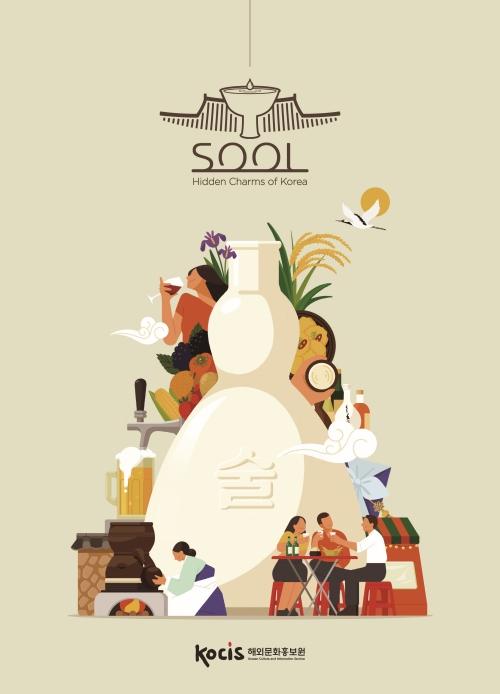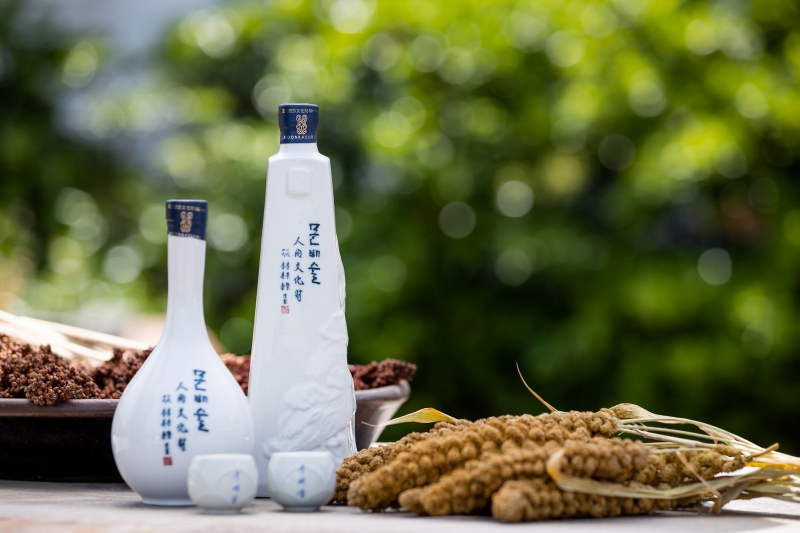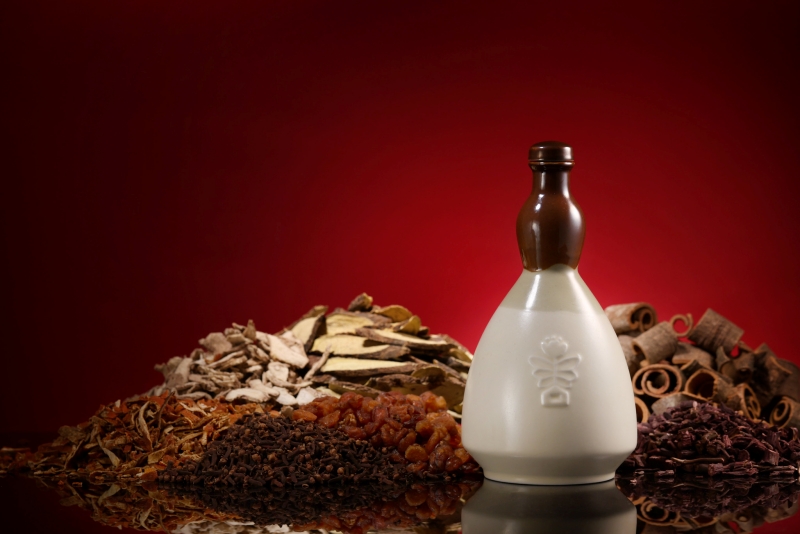
This is the cover of the English-language book "Hidden Charms of Korea: SOOL," a guide to traditional and more recent Korean alcoholic drinks.
By Min Yea-Ji
Photos = Korean Culture and Information Service
The English-language book "Hidden Charms of Korea: SOOL," which promotes Korea's unique alcoholic drinks and drinking culture, has been released.
The Korean Culture and Information Service (KOCIS), an affiliate of the Ministry of Culture, Sports and Tourism, on Feb. 13 said, "Amid the global popularity of Hallyu (Korean Wave), we have published an English-language book on Korea's unique alcoholic drinks, which are little known outside of the country, Hansik (Korean food) that pairs well with the booze and Korea's drinking culture."
Along with leading traditional drinks such as munbaeju (wild pear liquor) and gamhongno (medicinal herb liquor), one of the top three liquors of the Joseon Dynasty, the 112-page book introduces diluted soju, better known to the world as the drink in "green bottles," and distinctive craft beer. Photos taken at distilleries allow readers to taste the drinks with their eyes.
The book is divided into three categories spanning 16 articles: "Sool-ution* I: Soothing the soul," "Sool-ution II: Fusion of traditional and hip," and "Sool-ution III: Loved by Koreans and the world."
*In Korean, sool refers to the country's traditional alcohol. The term "sool-ution" is a neologism combining the words sool and solution.
The first category is about exclusive and traditional alcoholic drinks such as munbaeju, which boasts a pear-like scent though made from mixed grains; gamhongno, which is mentioned in the folktale "Byeoljubujeon" (The Hare's Liver) when the turtle lures the rabbit to go to the palace, as the Dragon King of the Sea needs to eat the rabbit's liver to cure his disease; the past and present of makgeolli (milky rice wine), the leading type of takju (cloudy alcoholic drinks); and yakju (clear liquor).
The articles also contain stories of the history and present of culinary artisans who struggled to preserve traditional drinks in danger of extinction.

Yellow non-glutinous millet shown here is used to make the mitsool (primary mash) of munbaeju (wild pear liquor), and sorghum is used to make deotsool, a malt that combines grain, yeast and water and is added to mitsool.
The second section, "Sool-ution II: Fusion of traditional and hip," features soju, both diluted and distilled, craft beer that challenges foreign prejudice against Korean beer and "premium traditional liquors" with their experimental production methods and regional ingredients.
The final category, "Sool-ution III: Loved by Koreans and the world," covers foods that go well with Korean booze as well as domestic drinking culture. Jay Park, head of Won Spirits, a company popularizing nonmainstream distilled soju, and Yoon Sook-ja, director of the Institute of Traditional Korean Food in Seoul, offer tips on how to enjoy Korean drinks. Other information on domestic booze and culture of interest to international readers is found in the question-and-answer section.
This book is a collection of articles and interviews written from April last year by staff writers at Korea.net (https://www.korea.net), the Korean government's leading multilingual portal, and columns by experts.
KOCIS will distribute 1,000 copies of the book to diplomatic missions and Korean Cultural Centers abroad and foreign media, embassies and cultural centers based in Korea. The content of the book will also be uploaded on the official websites of KOCIS and Korea.net (https://www.korea.net/Resources/Publications/About-Korea/view?articleId=9993). The portal offers the publication in the following languages for better access by people around the world: English, Chinese, Japanese, Spanish, German, French, Arabic, Russian, Indonesian and Vietnamese.
KOCIS Director Kim Jangho said, "Through this English-language book about Korean alcoholic beverages, we hope that people around the world newly discover the true value of our drinks, which have not been properly evaluated."

Gamhongno is a traditional liquor made with rice, non-glutinous millet, longan arillus, cinnamon, dried tangerine peels, dried clove buds, ginger, licorice roots and lithospermi radix.
jesimin@korea.kr